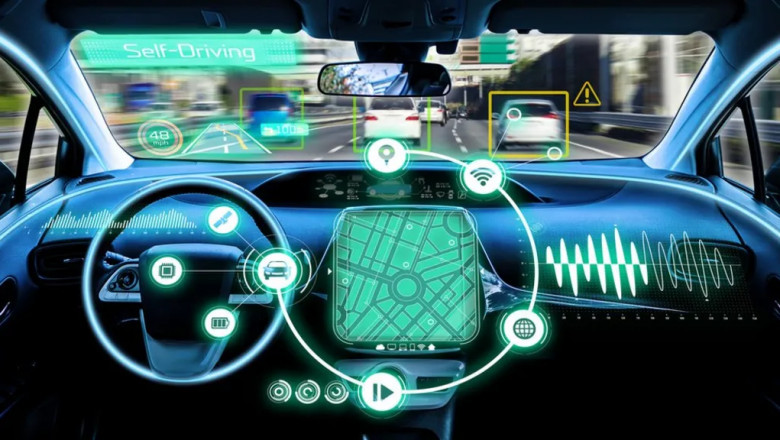views
In recent years, the automotive industry has undergone a significant transformation, largely fueled by advancements in technology. One of the most influential developments has been the integration of Advanced Driver Assistance Systems (ADAS) into modern vehicles. Designed to enhance safety, reduce driver workload, and prevent accidents, ADAS is rapidly becoming a standard feature in vehicles across all segments. From lane-keeping assistance to automatic emergency braking, these systems represent a major leap forward in making driving safer for everyone on the road.
Understanding ADAS: What It Includes
Advanced Driver Assistance Systems refer to electronic technologies that assist drivers in driving and parking functions. They rely on a combination of sensors, cameras, radar, and software to detect the vehicle’s surroundings and help the driver respond to potential hazards. Some of the most common ADAS features include:
-
Adaptive Cruise Control (ACC): Maintains a set speed while automatically adjusting to keep a safe distance from vehicles ahead.
-
Lane Departure Warning (LDW) and Lane Keeping Assist (LKA): Alerts drivers if they unintentionally drift out of their lane, and in some cases, automatically corrects the course.
-
Blind Spot Detection: Warns the driver of vehicles in adjacent lanes that may not be visible in mirrors.
-
Automatic Emergency Braking (AEB): Detects imminent collisions and applies the brakes to prevent or mitigate impact.
-
Traffic Sign Recognition: Identifies traffic signs and displays them on the dashboard to keep the driver informed.
-
Driver Drowsiness Monitoring: Uses cameras and sensors to detect signs of driver fatigue and issues warnings when necessary.
These features, among others, work together to provide a more comprehensive view of the road and reduce the chances of human error, a leading cause of traffic accidents.
Enhancing Safety and Saving Lives
The core benefit of ADAS lies in its ability to significantly reduce accidents and fatalities on the road. According to the National Highway Traffic Safety Administration (NHTSA), over 90% of road accidents are caused by human error. ADAS technologies are designed to support drivers in recognizing and reacting to hazards more quickly and effectively than they might be able to on their own.
For instance, AEB has been shown to reduce rear-end collisions by up to 50%, while lane-keeping technologies can prevent accidents caused by drifting into oncoming traffic or off the road. These systems are particularly valuable during poor weather conditions, nighttime driving, or in heavy traffic, where the risk of driver fatigue or inattention is higher.
Bridging the Gap to Autonomous Driving
ADAS also represents a crucial stepping stone toward fully autonomous vehicles. While full autonomy (Level 5 automation) is still under development, many of today’s ADAS features fall under Levels 1 to 3 of automation. These levels allow for varying degrees of control sharing between the driver and the vehicle.
By familiarizing drivers with partially automated features, ADAS is gradually building public trust and helping the industry refine and improve the technologies that will eventually power self-driving cars. This gradual progression is key to ensuring that safety remains a top priority throughout the evolution of autonomous mobility.
Challenges and Considerations
Despite the many benefits, there are challenges that come with the widespread adoption of ADAS. One of the main concerns is driver over-reliance on these systems. Some drivers may become too trusting of ADAS and fail to stay fully engaged, potentially leading to dangerous situations.
Another issue is system calibration and maintenance. Sensors and cameras need to be correctly aligned and clean to function effectively. After repairs or accidents, systems may need recalibration—a task that must be performed by trained professionals. Additionally, varying implementations of ADAS across different car brands can confuse drivers who switch vehicles often.
Cybersecurity is also a growing concern. Since ADAS relies heavily on software and connectivity, it becomes a potential target for hacking. Ensuring these systems are secure is critical for maintaining safety and public trust.
Conclusion
Advanced Driver Assistance Systems are transforming the way we drive by making our roads significantly safer. These technologies not only assist in preventing accidents but also reduce the overall stress of driving. As automotive innovation continues, we can expect ADAS to become even more sophisticated, ultimately playing a pivotal role in the transition to autonomous vehicles. However, while these systems offer substantial benefits, it's essential for drivers to remain attentive and understand the limitations of their vehicle’s assistance features. In the end, ADAS should be viewed as a co-pilot—supporting, but not replacing, the human driver.






















Comments
0 comment